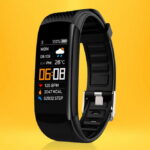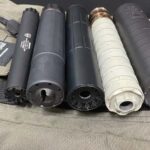Discussing the LG QNED90 TV Review is the topic at hand.
With an IPS panel and a Mini LED full-array backlight, the LG QNED90 is a very good 4k TV. The new backlight technology, which has local dimming enabled, produces fantastic contrast on LG’s first 4K Mini LED TV to hit the market. The contrast is among the best we’ve ever seen on an IPS panel.
However, it is not flawless, as there is observable blooming in dimly lit scenes, and the local dimming feature itself is only passable. It’s a good option for a bright room because it has expansive viewing angles, adequate reflection handling, and amazing peak brightness in SDR. It features the upgraded remote found on many of LG’s other 2021 models, and it runs the same version of WebOS found on other LG TVs this year.
please read on for more detailed information.
Table of Contents
Overview of LG QNED90 TV
Overall, the LG QNED90 is a fantastic TV. It’s a great option for watching TV shows and a good TV for watching sports because of its wide viewing angles, high peak brightness, and decent reflection handling. Low input lag and a quick response time make it excellent for gaming. It still works well for watching movies in a dark room even though it has poor black uniformity and high contrast with local dimming. Blooming also appears occasionally in dark scenes. Finally, even though it makes a great PC monitor, some uniformity issues might be annoying.
PROS
- becomes bright enough to block glare.
- beautiful angles of view.
- outstanding contrast with local dimming.
- excellent response time
CONS
- Significant uniformity problems in areas of related colors.
Design
The QNED90 has a lovely appearance in terms of design. The fact that these new mini LED TVs are all thinner than earlier FALD designs is one of their shared features. With only about 1.2″ (3.1 cm) in thickness, the TV is thin enough to display nicely on the wall, which is something that many people will undoubtedly appreciate.
Additionally, its borders are very understated and don’t detract from the image itself. All of the connections are arranged in two groups on the right side of the panel in the back, with the power cable being the only one kept apart on the left. The attached cable management clips, which don’t appear to be detachable, could be designed better because they add a little bit more depth if you intend to mount this on a wall. Special holes for the VESA wall mount are the only other thing we discover at the back.
You will need a piece of furniture that is large enough for the QNED90’s stand because it extends almost the entire length of the TV. Despite being made of plastic, the legs appear to be sturdy enough to support the TV. The QNED90 has very good overall cable management thanks to the special grooves and clips located at the back of the panel. Last but not least, the stand keeps the TV high enough for most soundbars to fit underneath it, but as we always advise, take measurements first to be sure.
The QNED90’s included remote control features the same cutting-edge layout as the other 2021 LG products. Without altering its overall functionality, the new Magic Remote 2021 appears to bring some fresh changes. Although the old Magic Remote wasn’t all that bad, it did require some upgrading after a while. The majority of LG’s features, including its special pointer system, universal remote functionality, and smart features, remain the same.
In general, the LG QNED90 is a really nice TV. The best 4K LCD TV from LG this year has a very slim design, a nice new remote, and good construction.
Video Quality
Brightness / Contrast
OLED technology may be superior to current LED LCD technologies in many areas, but LCD TVs still excel at brightness output, which is one of those areas. We have high hopes for what the QNED90 can provide in this area now that the much better mini LED backlight has been added.
The result of our SDR brightness test over a 10% window was 874 nits, which is excellent and more than enough for any SDR material available. We measured 1025 nits for HDR brightness over a 10% brightness level, which is excellent because anything over the 1000 nits threshold can produce HDR with impressive highlights. We used the highest LED Local Dimming setting and the maximum brightness for these measurements.
The mini LED offerings from LG are clearly a step below what Samsung did with their adoption of the new system, as shown by the aforementioned numbers, and what is happening is what we previously stated. LG wanted to keep their OLED models as the best-performing ones, so they slightly scaled them back to fit between the OLED and NanoCell series while still being worthy of consideration. As a result, the mini LEDs LG is offering are not on par with those Samsung is offering, at least in terms of brightness.
Viewing Angles
Because the ADS panel on the QNED90 is a particular type of IPS panel, viewing angles are generally very good. LG generally favors IPS panels over VA ones, giving them the advantage in terms of the widest possible viewing angles. The QNED90 keeps pace with the rest of the group despite the fact that they may still not be as good as OLED.
For the QNED90 in particular, we would say that an angle of no more than 40 degrees or just a little bit more was acceptable with little loss in overall image quality. Any further reduces the image’s brightness, color vibrancy, and black levels significantly. Therefore, if you plan to use this as a family TV, you shouldn’t experience any issues with different viewing angles. See more about T-Mobile REVVL 4 Plus Review
HDR Support
Expect no surprises in this regard as we receive the standard HDR support. As a result, the QNED90 includes support for the fundamental HDR10 required for 4K UHD playback, as well as the more sophisticated Dolby Vision that uses dynamic metadata for more accurate HDR representation and HLG that is primarily used for broadcasting.
The obvious omission is HDR10+, which we don’t see LG supporting anytime soon since this is primarily Samsung’s domain. It also appears to be missing Advanced HDR by Technicolor, but this is hardly an omission since there was never any real support for it to begin with.
Color Coverage
Now let’s examine how the TV renders colors. Approximately 95% of the DCI-P3 color space is covered by the QNED90, which is a very good result based on our measurements. We also had excellent 74% coverage on the larger REC.2020 color space. We can confirm that this TV does indeed support wide color gamut based on these numbers, which place the QNED90 on par with some of the LG OLED units we have previously tested.
The QNED90 performed remarkably well compared to other similar models in terms of behavior. In terms of color gradients, things looked pretty good with only some minor banding towards some darker shades, but it was not very obvious. Our best bet is LG’s OLEDs, which are still their premium offering because the QNED90 is from a new series and we don’t have any comparison units from last year. The QNED90 performed admirably in comparison to those tests.
Motion Performance
The QNED90 uses a native 120Hz panel, and we can say that overall, the QNED90 performed very well in terms of motion performance. Occasionally, depending on the content being displayed, there were instances of micro-stuttering, but overall, we were very happy with how the device handled the majority of the materials we threw at it, including both high- and low-framerate videos.
The television is equipped with the customary Motion Interpolation features, which can smooth motion and eliminate blur and judder from rapid camera movements. The majority of content was handled by motion interpolation with good results, but when there is a lot of action, artifacts do unavoidably appear because the TV cannot keep up. Naturally, using extremely aggressive settings will cause the well-known “Soap Opera Effect” to appear, so you must adjust the settings accordingly. The TruMotion setting in the menu can be used to turn on Motion Interpolation. You can change that to user and then customize the De-blur and De-judder sliders to suit your tastes.
Input Lag
Given that low figures from even lower-tier releases have become the norm in recent years, input lag was one aspect of the TV for which we were confident that we would see good results. The QNED90 couldn’t behave differently because the 2021 LG products we’ve reviewed in the past exhibited similar characteristics.
In our testing, the QNED90 was able to provide us with an average 13.4ms input lag in both 1080p and 4K resolutions, which is very good even though it was slightly higher than what we anticipated. Even though we’ve seen single digit numbers, this is still very low and more than enough for even the most ardent users. While this is high for quick-reaction games, it can still be sufficient for casual sessions. Outside of game mode, we measured an average of 128ms. The input lag was lastly measured at 5.6ms for high framerate content at 4K@120.
It’s also important to note that the TV has Auto Low Latency Mode (ALLM), which can be used with any compatible hardware, including the PS5 and Xbox consoles, and is very advantageous to users. Once more, we have HGiG Mode, a technology developed by the HDR Gaming Interest Group that enables you to enjoy HDR games in the manner intended by the designers and developers.
For some practical testing, we used our F1 2021 game and a PS5 connected to one of the HDMI 2.1 ports to observe how it behaved. Really, I have no complaints; the TV performed admirably, giving us prompt responses, excellent reactions, and immediate execution of all our commands. The QNED90 checks all the boxes for a high-quality, well-performing 4K TV.
Processor Technology Used
The QNED90 has a lot of features for processing images and colors thanks to its a7 Gen 4 processor, which is exactly the same as the one we saw in our LG A1 review.
The key word here is AI, as LG continues to heavily market the AI processing abilities of these chips. These chips use a combination of machine learning algorithms in conjunction with a sizable image database in order to provide an improved overall image and superior AI upscaling.
The AI Picture and AI Sound suites from LG are present on the a7 processor, though they are less advanced than the Pro versions we discovered in the LG C1. As a result, the processor automatically detects the type of content and the ambient lighting conditions, and then optimizes screen settings. The picture and sound are automatically adjusted to best suit the genre after the content’s type is analyzed, whether it be movies, sports, animation, or standard content.
Lighting Technology Used
For a very long time, LCD TVs suffered from subpar backlighting, and it’s only in 2021 that we start to see a significant improvement. The best backlight system to date was a Full Array with Local Dimming System (FALD), but even this was highly reliant on the quantity of dimming zones available. For more precise light control, add more dimming zones. However, this significantly affected the TV’s final cost.
As opposed to the Samsung QN85A and QN90A, which we reviewed, the QNED90 uses a mini LED backlight. The fact that mini LEDs are much smaller than conventional LEDs is their main advantage. The mini LED backlight has incredibly thin micro layers filled with numerous additional LEDs in place of a lens for light dispersion and a package to hold the LED in place. In this way, the backlight has much better and more accurate control over the closely spaced LEDs, avoiding blooming, which was the most glaring drawback of earlier LCD backlight systems.
Remember that even though mini LED technology is far superior to all LCD backlight systems currently available, blooming is still a problem and the number of zones added to each panel as well as the effectiveness of the dimming algorithms still play a significant role in its resolution. It appears that the 65″ we are testing here has around 1000 dimming zones, which was simply unattainable with the earlier FALD systems. Larger sizes typically use more zones, though we were unable to confirm this, and there are other sizes available as well, but we don’t yet have specific numbers.
Image Quality Impressions
One of the best 4K LCD TVs LG has yet to release, the QNED90 is a really well-performing television. The new mini LED backlight has reduced blooming while the model’s other qualities, such as high brightness in both SDR and HDR, nice viewing angles, good upscaling capabilities, low input lag, nice gaming features, and strong motion performance, place it high on the performance scale.
On the negative side, we can state that blooming is still very much evident, albeit less so than before. Additionally, the dimming algorithm had reaction times that seemed a little slow, and motion interpolation occasionally had issues when things got crazy on screen. There was some faint banding in the darker shades, though not always, and HDR10+ is obviously absent, as it is with everything that bears the LG logo. In general, not many negative comments were made, which is a really impressive achievement by LG.
Audio Quality
Now let’s talk about the audio. The LG QNED90 uses a system that is very reminiscent of the LG BX from a year ago, not only because they both use the same setup but also because their processors have remarkably similar capabilities. As we have stated repeatedly, with the advent of TVs that are so thin, there is simply not enough room to incorporate audio systems that are capable enough to truly create an immersive environment. Manufacturers are making an effort to address this by incorporating more sophisticated software and virtual technology, but software is only capable of so much if the hardware is adequate.
An audio system with 2.2 channels and a combined 40 watts of power is included with the QNED90. The AI Sound feature, which is a part of the a7 Gen 4 Processor 4K capabilities, optimizes sound by genre by examining audio sources according to the type of content. The AI algorithm can also improve the quality for a better listening experience by up-mixing two-channel sound to convincingly imitate 5.1 surround sound.
In addition to the aforementioned, the QNED90 is also Bluetooth surround ready, which means that it can actually drive the up-mixed audio into two wireless Bluetooth speakers that you can use as surrounds for much better and accurate surround activity.
Since we’re talking about surround sound, the TV can also support Dolby Atmos, either through a streaming service or through the HDMI eARC connection. Expecting a true Atmos experience from the included audio system is unrealistic, but it is still encouraging to see it supported.
Adaptive Sound Control is another feature of the TV’s AI sound capabilities. No matter what you’re watching—dramas, sports, movies, news, or music—the processor recognizes it and adjusts the sound for that particular form of media. In turn, this will make newsreaders’ voices more audible and enhance the vividness of movie sound effects.
Ports And Connectivity
On the back panel of the TV’s right side, there are two groups of connections for the QNED90, one of which faces sideways and the other downward. In fact, this is a development since many LG products in the past had ports that faced backwards, making them difficult to use if you wanted to mount the TV on the wall.
Starting with the ones that have a sideways appearance, we find a single USB port, four HDMI ports, and support for ARC/eARC on HDMI 3. An optical digital output is located at the bottom. Two additional USB ports, an Ethernet port, an RS-232C port, and the standard antenna/cable connector are located at the back.
While these HDMI 2.1 ports do support the full 48Gbps bandwidth, they only cap at 40Gbps. This is an interesting fact about the HDMI ports, but it is not a big deal because having ports that support 12 bit would be useless because there are currently no panels that can support it. Because the HDMI ports are v2.1, they support all current and previous features, including 4K@120, ARC, eARC, ALLM, VRR, G-Sync, FreeSync, HFR, and HDMI-CEC.
The lack of composite audio/video input is something we have noticed repeatedly as manufacturers gradually phase out analog ports in new releases. Therefore, if you happen to have some older equipment that does not have a HDMI, I believe you should think twice before making this decision or it’s time to start updating as this will undoubtedly extend to more and more audio/video products in the future.
The TV has built-in WiFi (802.11ac) and the more recent Bluetooth v5.0 for its wireless capabilities.
Os, Apps And Features
The mini LED backlight may be the new QNED TVs’ obvious selling point, and for good reason, but with the release of webOS 6.0, which we have already seen firsthand in our recent reviews of the LG C1 and A1, things have also drastically changed on the software front. This section of our review will be very similar to our earlier observations because the QNED90 isn’t that different and offers the same functionality.
You see, webOS used a single row of tiles on the bottom of the screen where everything was grouped together up until last year. This has changed with webOS 6.0 because the user interface now fills the entire screen and gives you a lot more visual information than any previous version has ever given you. We understand that some people might prefer the old design, which still allowed you to see what was on the screen, but this is entirely a matter of personal preference.
A little bit of what Google TV is doing was reminiscent of the new webOS. The new webOS 6.0 tries to give you options that are catered to your viewing preferences as it appears that smart TV platforms now favor a more personalized experience. As a result, there are tailored advertisements, suggestions for streaming services and broadcasting channels based on your viewing habits, and even shopping recommendations.
When you first see the new design, it will undoubtedly seem cluttered and chaotic, but if you give it some time, the majority of its architecture will become clear, and you will quickly get the hang of it. By pressing the Home button, the main webOS page opens. On the bottom, you still have a single row of your apps that you can arrange however you like.
Three large tiles for sponsored content, the weather, the time, and search are located at the top. Depending on what LG’s algorithm thinks you’d like to watch, there is one row of recommendations below. There are many more options available under the apps row, including the Home Dashboard, broadcasting channels, shopping suggestions, Sports Alerts messages, and much more.
Overall, we can say that we approve of LG’s new webOS 6.0 release. For those who are not interested in so much information the new UI provides, it feels clean but is a little bit more cluttered. Additionally, getting used to the UI may take some time if you are used to previous years’ versions.
WebOS’s support for apps is one feature that hasn’t changed in the new 2021 version, so you can find all the apps you might need there and download more from the online store. All the major players are present, including, but not limited to, Netflix, YouTube, Amazon Prime, HBO, Vudu, Hulu, Google Play Movies, Disney+, and Apple TV+.
Apple Airplay 2 and Apple Homekit are two additional apps that are offered. While HomeKit allows you to control some aspects of the TV from your mobile device, Airplay 2 allows you to stream content from other Apple devices to your TV.
This year, Sports Alert returns as an intriguing feature. You can put your favorite team on TV, and the QNED90 will let you know when and where a match will be broadcast while also providing you with score updates and the like. You have a lot of teams and sports to choose from when using the Sports Alert feature, which appears to be working with the internal tuner. There are certainly still many options from the list available, even though it obviously does not include every sport and every team.
We also had to mention voice control capabilities since we are discussing a smart TV platform. Along with their own ThinQ AI, which you can use to search for a variety of information, LG has also integrated the two most popular voice control services, Google Assistant and Amazon Alexa. You can issue commands like finding a particular TV show, controlling the volume of your TV, and changing channels by speaking into the Magic Remote’s built-in microphone. Remember that the TV has built-in microphones as well for a hands-free experience.
If using a mobile app is more your style than using the included remote, support is available. You can give your TV some simple commands using the LG ThinQ app, which is compatible with both Android and iOS devices.
Compared To Other TVs
Samsung QN90A QLED
The LG QNED90 cannot compete with the Samsung QN90A QLED due to their disparate panel technologies, each of which has advantages and disadvantages. The Samsung has a better local dimming feature and looks better in a dark environment due to its higher contrast, better black uniformity, and better local dimming. The Samsung is superior in a bright room as well because it has a higher peak brightness and much better handling of reflections.
Samsung QN85A QLED
In most situations, the LG QNED90 is slightly inferior to the Samsung QN85A QLED. The Samsung is preferable for a bright room with lots of natural light because it has significantly better handling of reflections and a higher peak brightness. The LG, on the other hand, offers significantly better contrast with local dimming, making it a better option for rooms with low light.
Sony X90J
Both the LG QNED90 and the Sony X90J employ different panel technologies, each of which has advantages and disadvantages. If you have a large seating area, the LG is ideal because it uses an IPS panel, which has much better viewing angles. The Sony is a better option for a dark room because it has much better black uniformity and contrast.
LG C1 OLED
Different panel technologies, each with advantages and disadvantages, are used in the LG C1 OLED and LG QNED90. Because the C1 uses an OLED panel, it has an almost limitless contrast ratio and doesn’t bloom in dimly lit environments, negating the need for a local dimming feature. Contrarily, the QNED90 uses an LED backlight, which makes it less attractive in low light but significantly brighter, making it a potential better option for a room with lots of natural light.
Conclusion
This is the first year that mini LED TVs have been produced, and like everyone else, while Samsung’s position was fairly clear, LG’s position was less distinct. It was clear from the start that LG wanted its OLED series to continue to be its best-selling line, but on the other hand, the inevitable comparison between Samsung and LG’s mini LED releases would put LG in a difficult position. To be honest, the QNED90 comes out somewhere in the middle.
Regarding your reading, I thank you.








